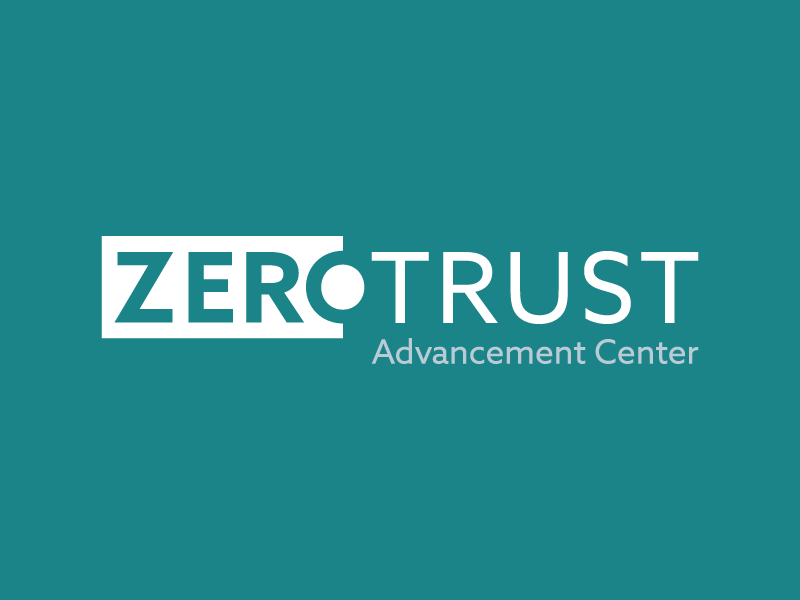Mitigating Security Risks in Retrieval Augmented Generation (RAG) LLM Applications
Blog Article Published: 11/22/2023
Written by Ken Huang, CEO of DistributedApps.ai and VP of Research at CSA GCR.
Introduction
Retrieval augmented generation (RAG) is an effective technique used by AI engineers to develop large language model (LLM) powered applications. However, the lack of security controls in RAG-based LLM applications can pose risks if not addressed properly.
In this post, we will analyze the RAG architecture, identify potential security risks at each stage, and recommend techniques to mitigate those risks when developing RAG-based LLM applications. Our goal is to provide developers with practical guidance on building more secure LLM applications using the RAG pattern. By understanding the security implications of RAG and implementing appropriate controls, we can harness the power of LLMs while safeguarding against potential vulnerabilities.
Overview of the RAG Architecture
Figure 1: RAG Components and Workflow
A RAG system comprises various components that work together to provide contextual responses to queries. The key components are the knowledge source, indexer, vector database, retriever, and generator. The workflow involves indexing the knowledge source, storing embeddings in a vector database, retrieving relevant context for a query, and using a language model to generate a response.
Knowledge Source: The knowledge source is the foundation of the RAG system. It comprises textual documents, databases, and knowledge graphs that collectively form a comprehensive knowledge base.
Indexing and Embedding Generation: The information from the knowledge source undergoes indexing, which organizes the data to make it easily searchable and retrievable. This involves categorizing the information and creating indexes.
As part of indexing, vector embeddings are also generated from the indexed data. These embeddings capture the semantic meaning of the text. They allow the retrieval system to find relevant information based on query context.
Vector Database: The generated embeddings are stored in a vector database optimized for vector data. This enables efficient retrieval based on semantic similarity.
Retriever: The retriever uses semantic search and approximate nearest neighbors (ANN) to fetch contextually relevant data from the vector database for a given query or prompt. It understands query semantics to retrieve information beyond just keywords.
Generator: The generator uses an LLM like GPT-4 or Claud2. It takes the context from the retriever and generates a coherent, relevant response. The LLM understands complex language to produce contextual text.
Workflow:
- The knowledge source is indexed and vector embeddings are generated, then stored in the database.
- For a query, the retriever finds the most relevant context from the database using semantic search and ANN.
- This context goes to the generator LLM which produces a response.
The RAG system represents an advanced AI approach, where the retrieval of contextually relevant information is combined with the generative capabilities of LLMs. This approach allows the responses generated by the LLM to be not only based on its pre-existing knowledge, but also augmented by up-to-date, relevant information from a diverse range of sources. The synergy between the retriever and the generator in the RAG model leads to more accurate, informed, and reliable outputs, making it a widely used framework for handling complex language processing tasks.
Why is RAG Widely Used in LLM Application Development?
RAG systems have become a popular pattern for enhancing LLM applications. This architecture provides many benefits that expand the capabilities and overcome limitations of standard LLM systems.
Key Benefits of Using RAG
Security and compliance: RAG allows sensitive data to be stored securely while still leveraging LLMs. This facilitates compliance in regulated industries.
Overcoming LLM Limitations: RAG provides additional external context to expand the LLM's limited context window. This results in more accurate, relevant responses.
Recent Popularity: Top AI companies like OpenAI now offer RAG capabilities, indicating industry acknowledgment of RAG's importance.
Knowledge Expansion: RAG taps into much larger external knowledge versus just what's in the LLM parameters.
Contextual Relevance: Retrieval improves understanding of query intent and domain.
Transparency: RAG can return sources used to generate responses.
Reduced Hallucination: Studies show RAG models have higher factual accuracy.
Continuous Learning: New information is easily incorporated from external knowledge.
Multimodal Flexibility: RAG systems can potentially leverage multimodal data.
Customizability: RAG allows mixing and matching components to fit use cases.
Scalability: RAG can efficiently scale to large knowledge corpora.
Iterative Improvement: Components like retrieval can be incrementally improved without altering the LLM.
Broad Applicability: RAG enhances LLMs across diverse vertical domains.
However, both the retriever and the generator warrant security considerations to prevent misuse or vulnerabilities, which we’ll analyze in detail below.
Overview of Security Controls
As illustrated in Figure 2, here is an overview of the security controls which can be implemented in the RAG system to enhance security:
Data Anonymization: Before any data processing begins, sensitive information within the documents, databases, and knowledge graphs is anonymized. This step is crucial for protecting individual privacy and is a foundational aspect of data security.
Indexing and Embedding: Following anonymization, the data undergoes indexing and embedding. In this step, the data is organized and transformed into a format that is efficient for retrieval, specifically by converting it into vector embeddings which represent the semantic content of the data.
Access Control on Vector Database: For any read/write access to a vector database, an access control mechanism is in place. This control ensures that only authorized personnel or processes can access the data, thus safeguarding it from unauthorized access or manipulation.
Encrypted Vector Database: The vector database, where all indexed and embedded data is stored, is encrypted. This encryption adds an additional layer of security, protecting the data at rest against potential breaches or unauthorized access. This is currently not natively supported by many vector database vendors. So, AI engineers may need to add an additional encryption layer on top of the vector database.
Semantic Search/Approximate Nearest Neighbors in Retriever: The retriever component of the system uses semantic search and ANN algorithms to fetch relevant context from the encrypted vector database. This process is based on the semantic understanding of the query to retrieve the most pertinent information.
Query Validation: Each query that enters the system is subjected to a validation process. This step checks the queries for potential harmful or anomalous content, thus preventing exploitation of the system through malicious input. Organizations can implement a data leak detection layer to prevent data loss in the query or prompt.
Generated Content Validation: After the LLM, such as GPT-4 or Claud2, generates a response, this content is validated. This validation ensures that the generated content adheres to ethical guidelines, is accurate, and does not contain harmful or inappropriate material.
Output Access Control: The final step in the process involves controlling who can access the generated output. This ensures that sensitive information is not disclosed inappropriately and is only available to authorized individuals or systems.
Each of these security controls plays a vital role in ensuring the integrity, confidentiality, and proper functioning of the RAG system. From the initial data preparation stages to the final output generation and distribution, these measures collectively create a robust and secure environment for operating advanced language processing tasks.
Figure 2: Overview of Security Controls for RAG
Security Controls for Vector Database
Vector databases that store knowledge sources for RAG systems are critical infrastructure components. The efficiency and scalability of vector databases, such as Pinecone, Chroma, and PG Vector, have made them indispensable for managing large-scale embeddings. However, the very nature of their storage mechanism, coupled with the valuable knowledge they contain, makes them potential targets for security threats. Thus, understanding the inherent risks and implementing robust security controls becomes essential.
Inherent Risks of Vector Databases Storing Knowledge Sources
Data Tampering and Corruption: Unauthorized alterations can corrupt the knowledge source, leading to inaccurate or malicious retrievals by the RAG system.
Unauthorized Access: Without proper security measures, malicious actors could gain access to the database, compromising both its integrity and the privacy of the data.
Data Leakage: The vast amount of knowledge stored might contain sensitive or proprietary information, making data breaches particularly concerning.
Service Disruption: Attacks targeting the availability of the vector database can disrupt RAG systems that rely on them.
Inefficient Scaling: Without proper security considerations, the scalability features of vector databases can be exploited, leading to resource exhaustion.
Security Controls for Safeguarding Vector Databases
Access Controls: Implement robust user authentication and authorization mechanisms. Ensure that only authorized personnel have access to the database, and even within that group, access levels are differentiated based on roles.
Data Encryption: All data, both at rest and in transit, should be encrypted. This ensures that even if there's unauthorized access, the data remains unintelligible.
In addition to the traditional encryption method in which you use a private key to encrypt a data encryption key, which is then used for data encryption on rest with an FIPS-approved algorithm such as AES256, researchers are investigating other encryption mechanisms:
- Homomorphic Encryption: This encryption technique allows computations on ciphertexts, generating an encrypted result that, when decrypted, matches the result of the operations as if they had been performed on the plaintext. Fully Homomorphic Encryption (FHE) might be too slow for real-time operations, but advancements in this field and Partial Homomorphic Encryption (PHE) could provide feasible solutions for specific use cases.
- Secure Multi-Party Computation (SMPC): SMPC allows multiple parties to jointly compute a function over their inputs while keeping them private. In the context of vector databases, this means that no single party has access to the complete vector data, but they can still jointly perform necessary computations.
- Differential Privacy: While not an encryption technique, differential privacy adds controlled noise to the data, making it difficult to infer specific information about any individual data point. This can be combined with vector quantization techniques to ensure that the original vectors are not directly exposed.
- Hardware-Based Solutions: Trusted Execution Environments (TEEs), such as Intel SGX, can be used to process data in a secure enclave where data is decrypted, processed, and then results are sent out in an encrypted form. While the data inside the enclave is in plaintext, it's isolated from the rest of the system, making unauthorized access extremely difficult.
- Tokenization: Replace sensitive original vectors with non-sensitive equivalents, called tokens. The mapping between original vectors and tokens is stored securely. While this doesn't protect the vector data itself, it ensures that the original sensitive data from which vectors were derived remains secure.
- Searchable Encryption: This method allows data to remain encrypted but still searchable. It's a compromise between full encryption and searchability. Techniques like Blind Storage or Oblivious RAM could be adapted for vector databases.
- Decentralization and Sharding: Distribute the vector data across multiple servers or locations. Each shard holds a part of the data, and no single location has the complete dataset. This approach, combined with other security measures, can enhance data protection.
As the field progresses, it's likely that more optimized and effective solutions will emerge to provide different vector database encryption mechanisms to meet business and regulatory requirements.
Monitoring and Alerting: Continuous monitoring of the database's operations can detect anomalous patterns. Real-time alerts can then notify administrators of potential security breaches.
Backup and Recovery: Regular backups ensure that in the event of data corruption or loss, the knowledge source can be restored. It's essential that backups themselves are secured and periodically tested for integrity.
Rate Limiting: To prevent resource exhaustion and potential service disruption, implement rate limiting on database queries. This control can also mitigate certain types of denial-of-service attacks.
Data Validation and Sanitization: Before data is ingested into the database, it should be validated and sanitized to prevent potential injection attacks or the inclusion of malicious data.
Regular Security Audits: Periodic security audits can identify vulnerabilities and ensure that the latest security best practices are being followed.
Network Security: Ensure that the network on which the vector database operates is secure. This includes employing firewalls, intrusion detection systems, and segregating the database in a protected network zone.
Patch Management: Stay updated with the latest patches from the vector database providers. Regularly updating the database software ensures protection against known vulnerabilities.
Transparent Documentation: While transparency aids user trust, it's also a security measure. By documenting security protocols and practices, organizations can ensure standardized responses to threats and foster a culture of security awareness.
While vector databases offer a cutting-edge solution for managing knowledge sources in RAG LLM applications, their security cannot be taken for granted. As with all critical infrastructure, a multi-faceted security approach, cognizant of the unique risks vector databases face, is imperative. As the reliance on generative AI and its associated databases grows, the robustness of these security measures will play a pivotal role in ensuring the trustworthy operation of such systems.
Figure 3: Key Vector Database Security Controls
Securing the Retrieve Stage
In this section, we will first examine the potential security risks in the retrieval stage of RAG systems. We will then explore some security controls that can be implemented in the retrieval stage to mitigate those risks.
Retrieve Stage Risks
The following is a list of potential risks during the retrieval stage:
Prompt Injection Risks: One of the primary security controls at the retrieval stage in a RAG system is query or prompt validation. This measure is particularly crucial in mitigating risks associated with prompt injection against the vector database. Unlike traditional SQL or command injection attacks that target conventional databases, prompt injection in a vector database involves manipulating the semantic search queries to retrieve unauthorized or sensitive information. By rigorously validating each prompt or query before it's processed, the system ensures that only legitimate requests are made to the vector database, thus preventing malicious actors from exploiting the retrieval process.
Unauthorized Data Access in Vector Database: We discuss this in the previous section. Nevertheless, during the retrieval stage, unauthorized access to vector databases can pose risks.
Risks Associated with Similarity Search Capability of Vector Database:
- Data Leakage through Similarity Queries: The vector database’s capability to perform similarity searches can pose additional risks. An attacker, by crafting clever queries, could potentially retrieve information that is semantically similar to sensitive data, leading to indirect data leakage.
- Manipulation of Search Results: There is also a risk of manipulation of search results where an attacker might influence the retrieval process to prioritize certain information, leading to biased or inaccurate results.
- Reconnaissance and Pattern Analysis: The similarity search feature might be exploited for reconnaissance purposes. By analyzing the patterns in search results, an attacker could gain insights into the nature of the data stored in the vector database and the relationships between different data points.
- Resource Exhaustion: Similarity searches are often resource-intensive. An attacker could exploit this by issuing complex queries in rapid succession, potentially leading to a Denial of Service condition by overwhelming the system's resources.
Security Controls for the Retrieve Stage
At the forefront of retrieval stage security is the implementation of robust query validation mechanisms. This process involves scrutinizing each user query before it is processed. The primary objective of query validation is to filter out potentially harmful or malicious queries that could exploit system vulnerabilities and also to detect potential data leaks which violate organizations' internal data leak protection policies.
Another critical aspect of retrieval stage security is the control over access to the vector database. Access control in this context goes beyond mere authentication of users; it involves a comprehensive management of permissions, dictating who can retrieve what kind of information. This granularity in access controls is essential in environments where users have different clearance levels or where the system handles data of varying sensitivity.
For example, in a corporate setting, an employee from the marketing department may have different access privileges compared to someone from the research and development department. Implementing such differentiated access controls prevents data leakage and ensures that users can only retrieve information pertinent to their roles and responsibilities.
Furthermore, the security of the retrieval stage is also about maintaining the integrity of the information being retrieved. This involves ensuring that the information fetched from the vector database is not tampered with during retrieval. Employing encryption during data transmission can achieve this. Encrypting the data as it moves from the database to the retrieval system ensures that even if the data is intercepted, it remains unintelligible and secure.
Additionally, using secure and updated communication protocols to transfer data between the database and the retrieval system further fortifies this stage against interception and unauthorized access.
Regular auditing and monitoring of the retrieval processes also plays a crucial role in security. This includes keeping track of all queries processed, analyzing them for patterns that might indicate potential security threats, and monitoring the system for any unauthorized access attempts. Such proactive monitoring helps in quickly identifying and mitigating potential threats before they can exploit system vulnerabilities.
Securing the Generation Stage
In RAG-based LLM applications, the generators are mostly the foundation LLM models, primarily sourced from third parties. These foundation models are the work of open-source contributors or proprietary models from industry powerhouses such as OpenAI, Anthropic, Google, and Microsoft. The depth of research and credibility associated with these entities imbues a degree of trust in these models.
However, the third-party nature of these foundation models brings to the fore challenges related to integration, fine-tuning, and especially security, particularly when accessed through APIs. Furthermore, the development of RAG-based LLM applications sometimes involves the fine-tuning of these foundation models to tailor them to specific use cases or domains, adding another layer of complexity to the security paradigm.
Understanding the Inherent Risks at Generation Stage
Misinformation and Inaccurate Content: The LLM might generate responses that are factually incorrect or misleading. This risk is particularly significant in scenarios where the output is used for decision-making or disseminating information to a broader audience.
Bias and Offensive Content: There is an inherent risk of the LLM generating biased or offensive content, either due to biased training data or the nature of the query itself. This can lead to reputational damage and legal liabilities, especially if the content is discriminatory or violates content standards.
Data Privacy Violations: The LLM might inadvertently generate responses that include or infer sensitive information, leading to data privacy violations, especially if the model has been exposed to sensitive training data.
Output Manipulation: The risk of external manipulation where an attacker influences the LLM to generate specific responses, either through crafted queries or by exploiting weaknesses in the model.
Automated and Repetitive Tasks Vulnerability: If the LLM is used for automated tasks such as using Agentic tools such as AutoGPT, BabyAGI, or OpenAI Assistant API, it might be vulnerable to exploitation, where repetitive or predictable responses could be used maliciously.
Security Controls for the Generation Stage
In the generation stage of a RAG system, implementing robust security controls is needed to safeguard against various risks associated with the output of LLMs like GPT-4 or Claud2. At this juncture, the primary objective is to try to validate that the content generated is accurate, unbiased, appropriate, and free from manipulation or privacy violations.
A pivotal security control at this stage is the validation of generated content. This process involves scrutinizing the responses produced by the LLM to identify and filter out any misleading, offensive, or inappropriate content. It's a safeguard that ensures the integrity and appropriateness of the output, especially in scenarios where the information is disseminated widely or used for critical decision-making.
Alongside this, contextual integrity checks play a vital role. They ensure that the LLM's responses are in line with the provided context, preventing the model from veering into unrelated or sensitive topics. This control is particularly crucial in maintaining the relevance and appropriateness of the responses.
To further enhance the security at this stage, special attention is given to the training data used for the LLM if finetuning is involved in the RAG systems due to business requirements. By ensuring that the training data is thoroughly anonymized, the risk of the model inadvertently generating responses that include or infer sensitive information is significantly reduced. This approach is a proactive measure to prevent data privacy violations.
Monitoring the queries and inputs fed into the LLM is another essential control measure. This monitoring helps in detecting attempts to manipulate the output, whether through crafted queries or by exploiting model weaknesses. This is also needed as a mechanism to prevent data loss to validate if the inputs and prompts do not contain sensitive data.
Control over who can access the generated content is equally important. Implementing stringent access controls ensures that sensitive information, if generated, is not disclosed inappropriately. This measure is vital in scenarios where the output might contain confidential data, thus safeguarding against unauthorized access and dissemination.
In addition, the following are more security controls, depending on how the RAG system is developed.
- Bias Mitigation During Fine-Tuning: Ensuring a diverse and representative dataset for fine-tuning can considerably reduce biases. Techniques like word embedding debiasing can further refine the model's neutrality.
- Human-in-the-Loop Evaluation During Fine-Tuning: During the fine-tuning phase, human evaluators can provide valuable insights and nuanced judgments to ensure the model aligns with ethical and quality benchmarks.
- Content Moderation: Implementing allow-lists and block-lists during the generation of outputs offers a robust mechanism to ensure alignment of content with predefined criteria.
- Data Privacy During Fine-Tuning: It's essential to integrate best practices like differential privacy and data anonymization during the fine-tuning of third-party foundation models.
- Administrative Overrides: Real-time administrative intervention mechanisms can serve as a safety net, empowering immediate action against any unforeseen or problematic outputs.
- Comprehensive Model Evaluation: Once fine-tuning is complete, the model should undergo a thorough evaluation against performance, safety, and quality standards.
API Security Measures for Third-party Foundation Models
When tapping into third-party foundation models via APIs, it is paramount to ensure rigorous security measures:
- Secure API Endpoints: Always utilize HTTPS for API endpoints to guarantee encrypted data transmission and safeguard against eavesdropping attacks.
- API Rate Limiting: Establish rate limiting to defend against DDoS attacks and to ensure uninterrupted service availability.
- Authentication and Authorization: Adopt robust authentication mechanisms like OAuth 2.0 and pair them with granular authorization controls, ensuring that users or systems only access resources they're permitted to.
- Input and Output Validation: To protect against prompt injection attacks, a prominent concern in the OWASP Top 10, it's crucial to rigorously validate and sanitize all API inputs. This is still an ongoing research effort, especially since the inputs to LLM models are natural language inputs, which pose challenges to input validation.
- Error Handling: Ensure that error messages are designed to not disclose any sensitive information, thereby reducing information leakage risks.
- Regularly Update and Patch: Remain abreast of the latest patches from the API providers to guard against known vulnerabilities.
- Logging and Monitoring: Uphold detailed logs of API access and establish real-time monitoring, coupled with alerts for any suspicious activities.
- Review API Dependencies: Regularly ensure that any third-party libraries or dependencies in use with the API are free from known vulnerabilities.
While third-party foundation models in RAG systems present a wealth of capabilities, they also usher in security complexities, especially when accessed through APIs. Drawing inspiration from industry efforts such as the OWASP Top 10 for LLM applications is a good approach for developing secure RAG LLM applications. As the landscape of generative AI continues to morph, a vigilant and adaptive stance will be crucial to navigate its multifaceted challenges and opportunities.
End-to-End Security Controls
Beyond component-specific controls, some overarching best practices are:
- Adopt security-by-design principles covering the full pipeline. Incorporate security reviews in development workflows.
- Perform rigorous testing, including red teaming exercises to uncover edge cases. Exercise caution before production deployment.
- Implement access controls around models and infrastructure to prevent unauthorized access.
- Continuously monitor all components to identify emerging threats, and enable rapid response.
- Support overrides and throttling mechanisms to restrict unsafe model behaviors on the fly.
- Publish transparency documentation covering security practices, risk assessments, and incident response plans.
- Incorporate diverse human feedback throughout the development and deployment lifecycle to identify blind spots.
- Use open source tool Ragas to evaluate RAG pipelines.
Ragas is a framework that helps AI engineers evaluate and quantify the performance of RAG pipelines and was used as an example in an OpenAI DevDay breakout session (see video, starting at 20:33 minutes).
Ragas provides metrics and tools based on the latest research to assess the quality of the RAG pipeline's generated text.
Key features of Ragas include:
- Integrate with CI/CD for continuous checks and monitoring
- Evaluate text quality on dimensions like coherence, faithfulness, and relevance
- Quantify overall pipeline performance with a Ragas score
- Easily benchmark experiments to improve your RAG system
To install Ragas, you can use:
pip install ragas
As a quickstart, here is a small example:
from ragas import evaluate
from datasets import Dataset
dataset = Dataset(...)
results = evaluate(dataset)
{'ragas_score': 0.860,
'context_precision': 0.817,
'faithfulness': 0.892,
'answer_relevancy': 0.874}
Conclusion
Retrieval augmented generation offers a promising approach to developing LLMs that produce high-quality, honest responses grounded in verified knowledge. However, each RAG component also introduces unique vulnerabilities that malicious actors could exploit.
Mitigating these risks requires a multi-pronged strategy encompassing secure software development, robust infrastructure, responsible ML practices, and ongoing monitoring. RAG systems also necessitate greater transparency into their capabilities and limitations to set appropriate user expectations.
By applying the security controls outlined in this post, we can build RAG-based LLM applications that deliver immense value to users, while also upholding principles of safety, accuracy, reliability, and trust. Of course, risks cannot be entirely eliminated, but following security best practices will provide strong safeguards against harm.
With great technological power comes great responsibility. As LLMs increasingly mediate information in our digital lives, instituting thoughtful security practices that center human well-being is an ethical imperative for engineers, researchers, and leaders building this future.
About the Author
Ken Huang is the CEO of DistributedApps.ai, a firm specializing in GenAI training and consulting. He's also a key contributor to OWASP's Top 10 for LLM Applications and recently contributed to NIST’s Informative Profile Regarding Content Provenance for AI. As the VP of Research for CSA GCR, he advises the newly formed CSA GCR AI Working Group. A regular judge for AI and blockchain startup contests, Ken has spoken at high profile conferences like Davos WEF, IEEE, and ACM. He co-authored the acclaimed book "Blockchain and Web3" and has another book, "Beyond AI," slated for a 2024 release by Springer. Ken's expertise and leadership make him a recognized authority on GenAI security.
Related Resources



Trending This Week
#1 The 5 SOC 2 Trust Services Criteria Explained
#2 What You Need to Know About the Daixin Team Ransomware Group
#3 Mitigating Security Risks in Retrieval Augmented Generation (RAG) LLM Applications
#4 Cybersecurity 101: 10 Types of Cyber Attacks to Know
#5 Detecting and Mitigating NTLM Relay Attacks Targeting Microsoft Domain Controllers
Related Articles:
Considerations When Including AI Implementations in Penetration Testing
Published: 04/30/2024
The Future of Cloud Cybersecurity
Published: 04/29/2024
CPPA AI Rules Cast Wide Net for Automated Decisionmaking Regulation
Published: 04/26/2024
Navigating the XZ Utils Vulnerability (CVE-2024-3094): A Comprehensive Guide
Published: 04/25/2024






